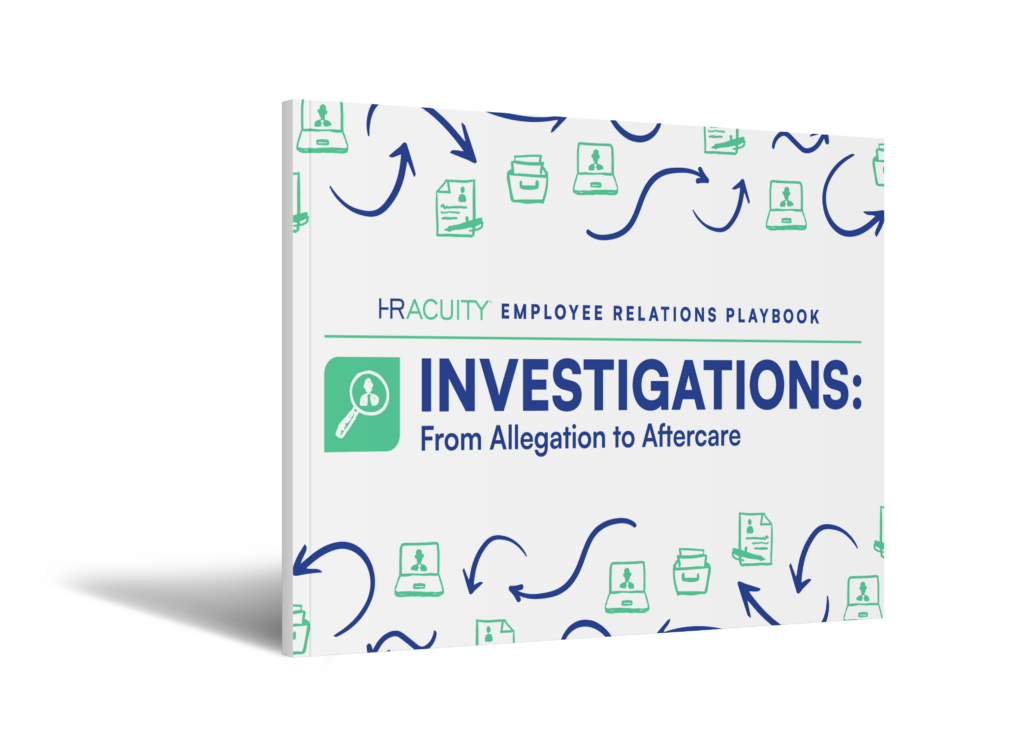At some point, all companies face workplace misconduct. Employees, being human, will eventually break policy – whether intentionally or not. It happens – and ignoring it can lead to bigger problems for your organization. How you handle employee misconduct is a critical HR and ER responsibility, as managing issues professionally and with tenacity, transparency and compassion is key to keeping your company strong.
According to Forbes, misconduct cost U.S. businesses $20 billion in 2021. To avoid major consequences, employers need to act fast and identify the best way to navigate these situations as they arise. Fortunately, most employee misconduct can be handled without the need for a lawsuit or formal investigation. Read on to learn more about how to oversee employee misconduct in the workplace and what you can do to prevent future incidents.
An Overview of Employee Misconduct
Employee misconduct is a term that describes a wide range of behaviors that can damage a business or the workplace environment. Misconduct is often seen as a form of insubordination and can include any action that goes against the company’s rules, policies or standards. Organizations typically have a spectrum of misconduct, from minor to severe, handling each issues based on where it falls.
Employee misconduct can include illegal activities such as theft, workplace violence and harassment. It can also cover less severe acts like being late for work, not following certain procedures or making personal phone calls while on the clock.
Employees should be made aware of the company’s policies and disciplinary procedures. This includes expectations about what is and isn’t acceptable behavior in the workplace, including consequences based on the severity and frequency of an offense. For example, if an employee is late for work, they should be expected to provide a valid reason for being tardy. If they’re unable to, they may be issued a warning. If they’re late again, they may be written up, with further disciplinary action following future infractions.
Specific rights and responsibilities should always be encouraged and enforced to ensure a safe, healthy work environment. This includes the right to be accompanied by a colleague, a trade union representative or a lawyer during any disciplinary meeting or investigation. Employees should also be informed of the consequences of their actions, including potential job loss. An employee handbook is a good place to educate staff in this regard.
Download the Employee Relations Playbook
Everything you need to know from
Allegation to Aftercare.

Common Types of Employee Misconduct
While it’s unlikely that many employees will actively strive to commit misconduct, it can happen. And when it does, it can have a serious impact on the employer, other employees, customers and the business as a whole. It’s important to be aware of the various types of misconduct and how to deal with them.
Here are some common examples of misconduct:
- Dishonesty: Lying to another employee, a customer, a client or a business partner. It can be as simple as exaggerating a claim or as complex as hacking into a company database to steal information.
- Insubordination: Refusing to follow a reasonable request or instruction from a manager or supervisor. It could be argued that an employee has violated the company’s rules and directives when they don’t comply.
- Unsafe behavior: Being guilty of a safety violation or of endangering the safety of others on the job site. It may also include knowingly using unsafe equipment, taking shortcuts or haphazardly operating a vehicle.
- Offensive language or conduct: Using inappropriate language or actions that are offensive to others. It may also include using profanity, teasing or bullying. To promote a positive environment, there should be a no-tolerance policy for any type of improper or abusive behavior.
- Willful damage to company property: Intentionally destroying or causing damage to the company property, including equipment, supplies or facilities. It may also include damaging the company’s reputation by committing fraud against the company or a customer.
- Theft: Taking another’s property, with the intent to deprive the owner of the use or benefit of the property. Stealing money, materials or supplies is also theft. It may also include falsifying or altering a document to deceive someone for their own benefit.
Many other examples of misconduct should be highlighted in your employee handbook as a resource for staff to refer to when they are unsure what behavior is acceptable. By outlining details such as working hours, dress code and using mobile phones in the office, employees will have clear guidelines to follow. This also minimizes the chance of a misunderstanding or an overreaction.
Forms of Employee Misconduct That Can Result in Termination
Although state and federal employment laws outline specific actions that should be followed when terminating an employee, some misconduct is so egregious that it must result in immediate cessation of employment. Below are some examples of forms of wrongdoing that are considered gross misconduct and can result in immediate termination with cause:
Sexual Misconduct
This can take a variety of forms, such as inappropriate behavior in the workplace. The challenging aspect of this type misconduct is that many people may not understand the difference between a harmless joke and harassment versus what constitutes a threat. Hold consistent training sessions and staff discussions to make sure everyone is aware of rules and regulations. Dealing with this type of alleged misconduct can be difficult and sometimes complicated, so it’s important to have a clear policy, act promptly and keep detailed records of any incidents that occur.
Harassment
Harassment is a serious issue that needs to be dealt with swiftly and effectively. Employees should not feel that they are being singled out, and employers must act quickly to ensure that all employees are protected. Any form of harassment is a form of misconduct. This includes offensive language or gestures, physical abuse, threatening behavior, intimidation or humiliation. While some cases may only be considered minor and can be handled through a simple warning, multiple instances of harassment may warrant termination – and it can be immediate if your termination policy allows for it.
Fraud or Theft
Stealing from the company, such as company property or misuse of funds, is a serious matter that can negatively affect the business in a tremendous way. It is crucial that you take steps to ensure that any employee suspected of fraud or theft is investigated immediately. If the employee has been caught with incriminating evidence, harsh consequences must be meted out to prevent others from following their example.
Sometimes an employee can be fired for actions they took outside of work, especially if the action impacts their job or the company’s reputation. For example, if an employee is convicted of a crime, unrelated to work, this may be a reason for dismissal.
How do you dismiss an employee for gross misconduct?
The best way to dismiss an employee is to first ensure that the employee is aware of the misconduct and has the opportunity to respond. This could be a written letter or email detailing the misconduct and the outcome of the disciplinary meeting. This is also a good time to inform the employee of any further legal action that may be taken. For serious misconduct, it’s completely acceptable to dismiss the employee immediately. However, sometimes it’s advised to suspend an employee with or without pay while the investigation is underway.
Employee Relations in the Workplace
To prevent wrongful termination claims, it’s critical to document the employee’s activity in your business and the disciplinary action taken. Documentation should include a description of the conduct that led to your decision, the date, time and reason for the termination. It can be beneficial to have a workplace investigation process set out within your employee relations (ER) strategy. Using employee relations software such as HR Acuity’s Case Management platform provides ER managers with a single place to document all cases of misconduct within an employee’s lifecycle. This process will ensure that the relevant information is recorded and easily accessible should an employee make an unfair dismissal claim.
It can also be a valuable tool for improving work ethic and workplace morale. Not only can a formal investigation process help to identify areas of concern and how to improve the work environment, but it also creates a culture where employees are aware that misconduct will not be tolerated and will promote positivity and accountability.Interested in learning more about how to handle employee misconduct cases? Reach out to HR Acuity to speak with one of our employee relations experts today.



